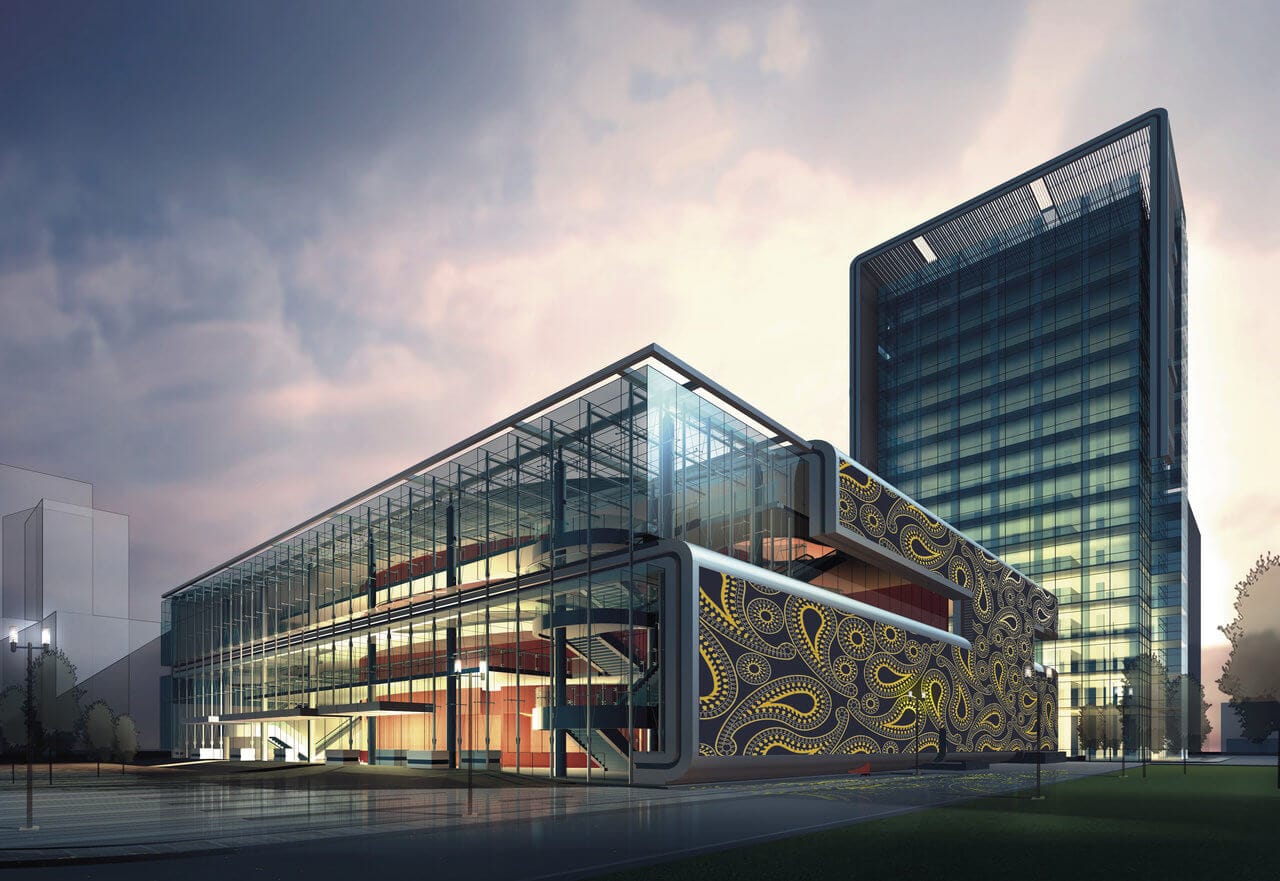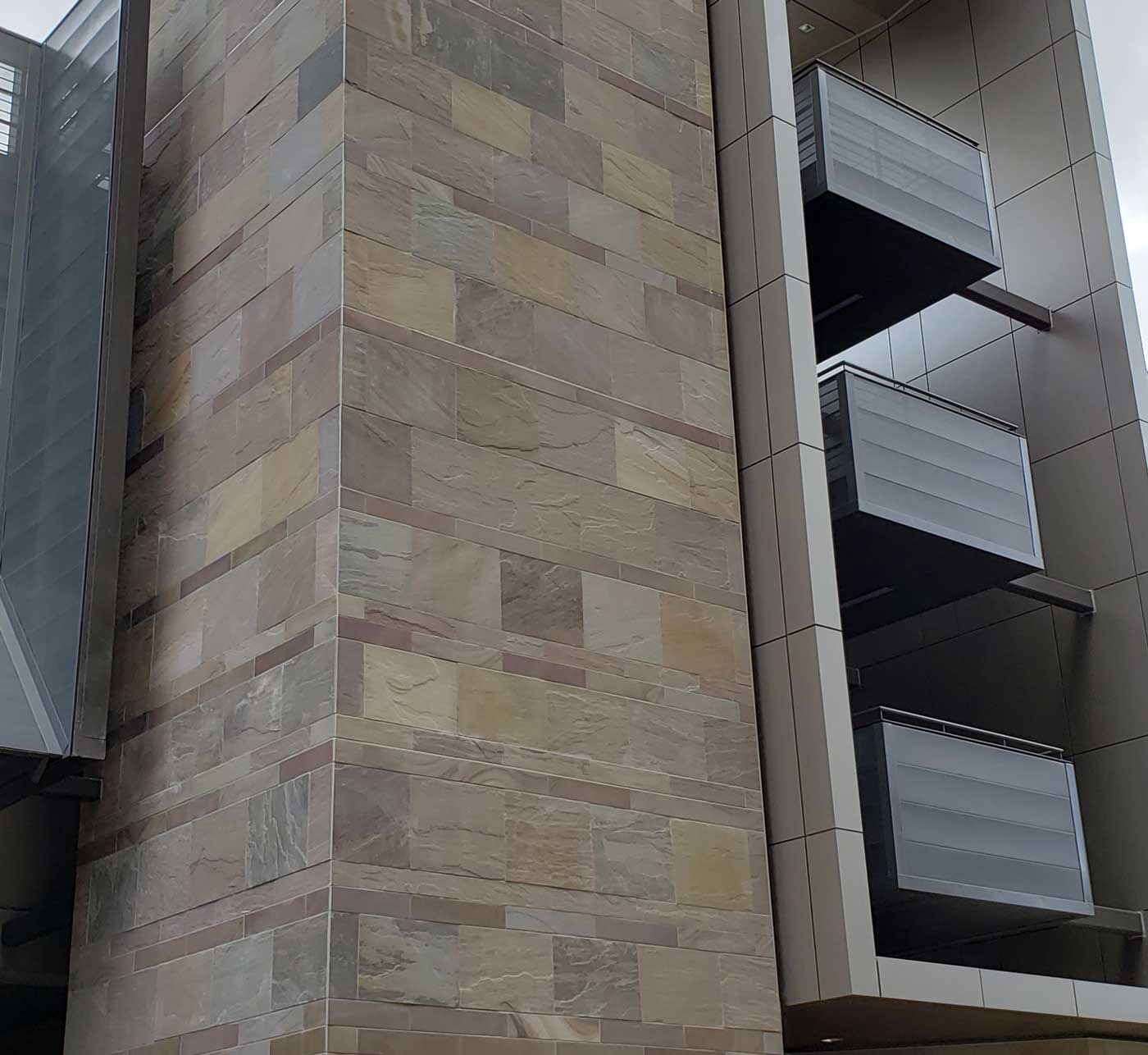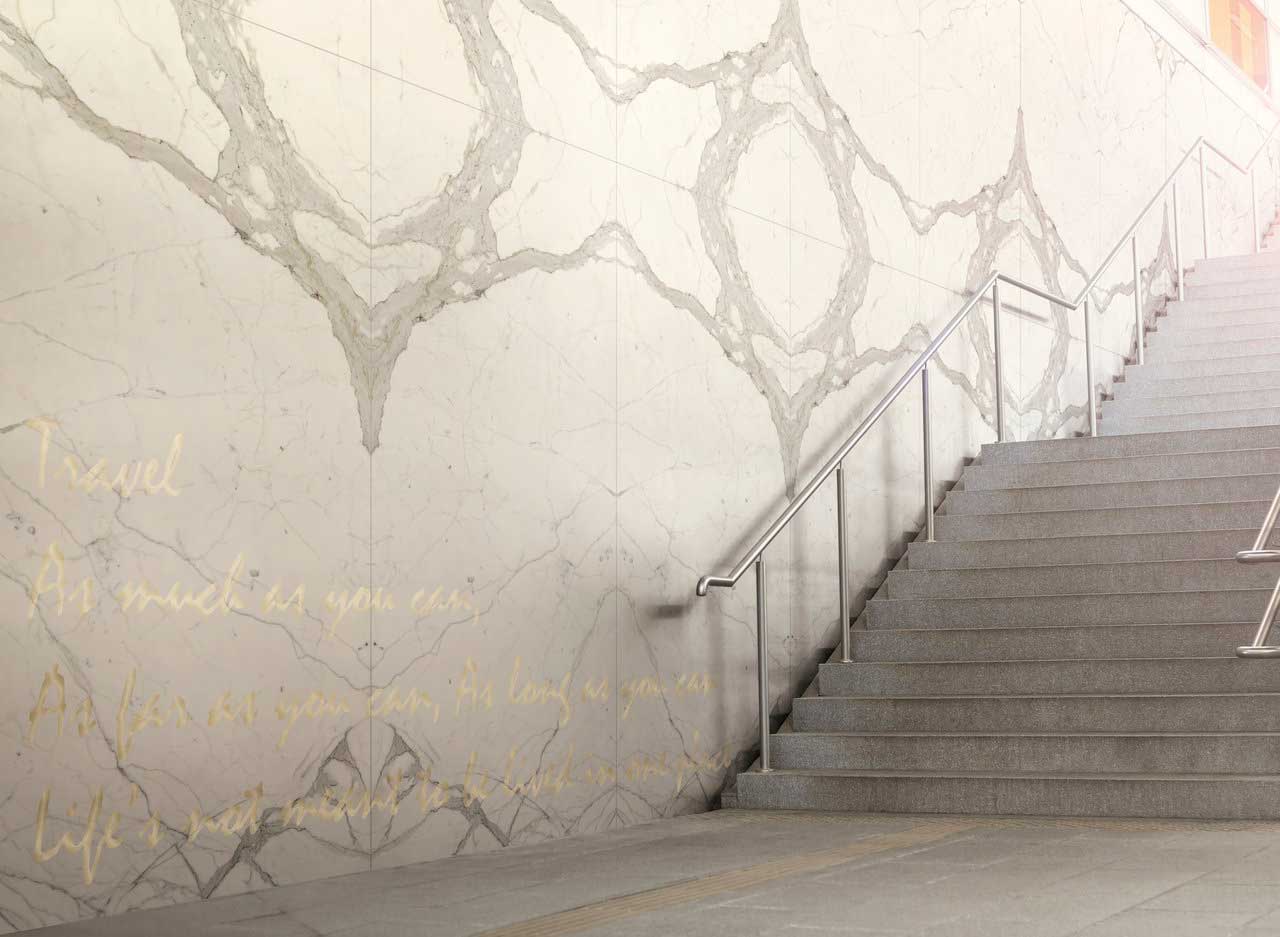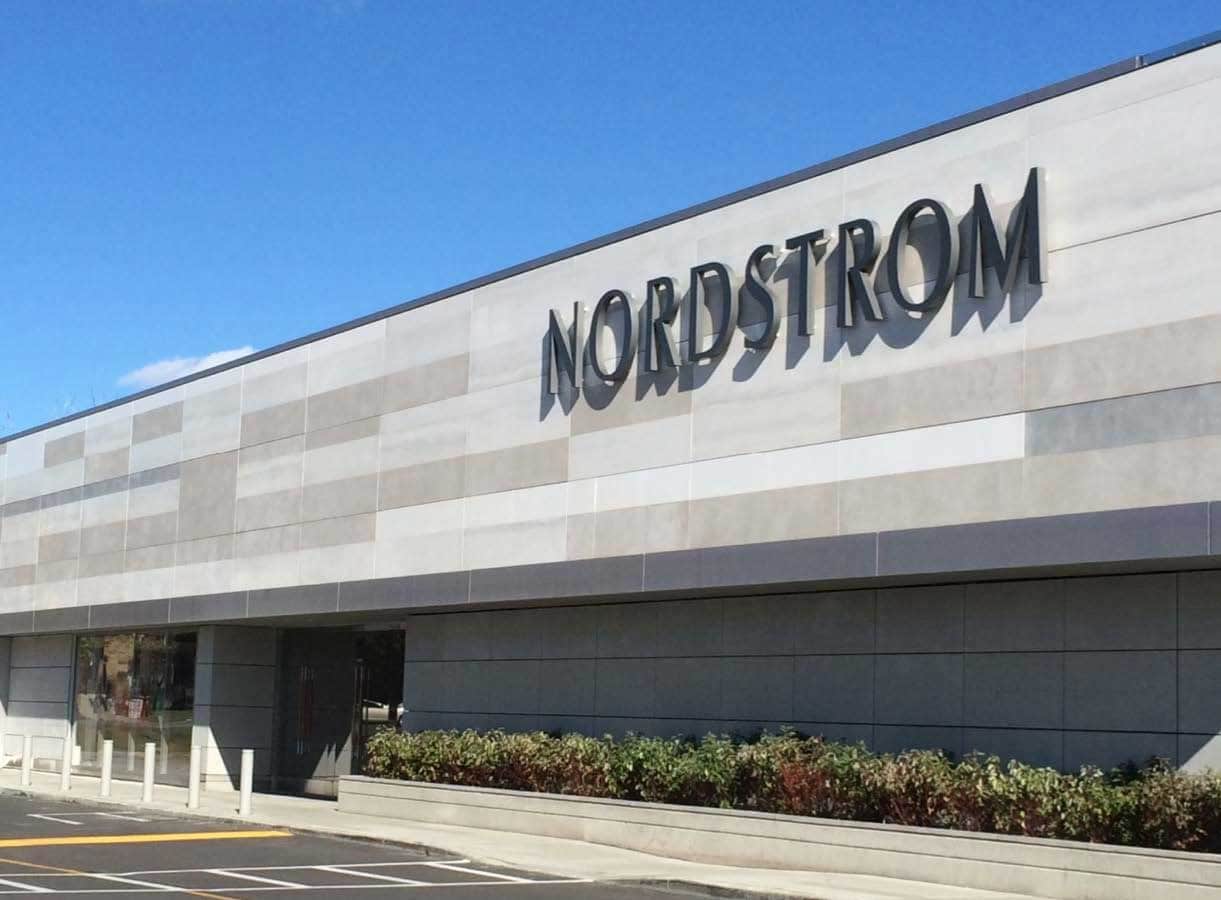Applications

Advantages

- Thermal and acoustic insulation
- Contribution to green building certification credits
- Protection from daily weather and adverse environmental conditions
- Adaptable installation for original or refurbished construction
- Unique style options for statement architecture and branding
ROOM TYPE
The exterior of a building makes that all-important first impression—a statement that communicates the personality of the structure and the occupants.
Ceramic tile provides a wide variety of colors, shapes, sizes and styles with which to create an exterior cladding (facade) design that is unique in style, function, and durability. Plus, a ceramic tile facade is maintenance-friendly—this beautiful protection for your building will remain unaltered to light and environmental pollution!
In an adhered facade application, tiles are bonded to a building’s exterior wall, typically with a cementitious mortar. A tiled exterior wall adds an element of thermal mass to the building envelope, meaning reduced fluctuation in temperature and increased energy efficiency in heating and cooling the building’s interior. Tiles as large as 48×48 and 33×72 inches can be used in adhered façade applications.
In a ventilated façade application, tiles are mechanically fixed to a building’s exterior using fasteners or proprietary “clip” systems. This creates space between the tile and the original exterior building wall, resulting in a chamber of circulating air that can remove heat, keep the building structure dry, and improve insulation properties. A building with a ventilated façade can achieve energy savings of 20-30% and have greater control over the building’s interior temperature by helping to reduce peak heating and cooling loads, as well as help reduce external noise pollution. The ventilated chamber also provides space for pipe and duct housing so that maintenance for the building is readily accessed.
Whether a facade is adhered or ventilated, work can be carried out on individual tiles should any maintenance be required. In the case of ventilated facades, individual tiles might have the ability to be mechanically detached, then re-fastened. Plus, tile façade applications (regardless of the climate conditions) can be adaptable to a variety of substrates and conditions, making adhered and ventilated facades exterior upgrade options for renovation projects, too.
Ceramic tile used in façade applications can contribute points toward energy efficiency and/or innovation credits in major green building programs, including LEED and Green Globes. Green Squared Certified® tiles and tiles covered by the North American tile EPD that are used on an external façades can further contribute to EPD and/or multi-attribute sustainability certification credits. For more information on the benefits of ceramic tile facades in green building and construction, download the publication, Tile: The Natural Choice.

Download #OutsideTheBox: Your Tile Buying Guide…and get started now!


